There are two kinds of designs of switched-gain amplifiers: those that have significant signal currents flowing through the switch, and those that don't. Off-the-shelf analog switches, such as the DG family from Intersil, etc., have the following drawbacks:
Switch resistance depends on the absolute voltage of the signal - this modulates the gain of your circuit, and adds distortion.
Switch resistance can be at best compensated by a factor of 10 by using another switch on the same die as a reference. The switches' on resistance typically matches within 10% and temperature tracking should be similar on one die.
So, the solution is to avoid all that. This lets you get away with using potentially much cheaper switches, too.

simulate this circuit – Schematic created using CircuitLab
This helps as follows:
The op amp inputs have high impedance, so that "no" current flows through the switch.
The switch does carry the op-amp's bias/offset currents. If you want to compensate for it, leave the SW3 from the same package in series with the positive input. That switch will be closed at all times. If the op-amp has very low offset current, you can delete SW3. Some op-amps have decorrelated "offset" currents and for lowest noise should not use unnecessary source resistance on the "other" input. The datasheet would indicate that.
The switches all "see" the constant voltage present at the positive input of the op-amp, and thus their resistance isn't modulated by the signal.
Of course, nothing is free. The op-amp's open-loop gain is reduced, since it sees lower load resistance on the output -- all the gain dividers load the output in parallel.
Judicious selection of U1 allows to keep the performance satisfactory with multiple switches. If you need more gains, factor out common integers and split the gain between two stages. This would be necessary to maintain the bandwidth of the system anyway, or to keep the noise in check by not having to have excessive GBW at low gains.
C1 is generally a good idea, but it should be selected so that its effects are far away from the passband. You don't want the variable resistance of the switch distorting your signal.



